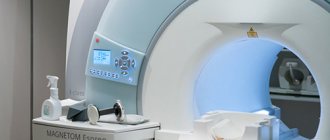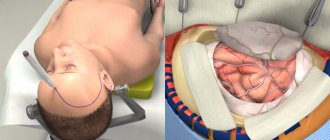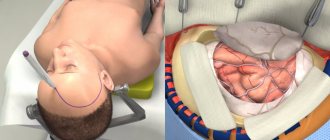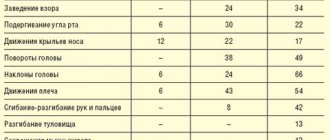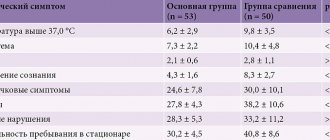Home>Articles>Paracetamol for hangover
Alcohol abuse leads to a hangover and unpleasant symptoms associated with it. Headaches are especially difficult to bear. To get rid of this symptom, various medications are used, one of which is paracetamol. The medicine eliminates headaches, which is why it is often used. But you should find out whether paracetamol can be used for a hangover and how it affects the body.
Effect of the drug
Paracetamol has been considered a popular and sought after pain reliever and antipyretic for half a century. Efficiency is associated with uniform distribution across tissues.
The active ingredients block the action of prostaglandins, which are sources of pain. This eliminates moderate pain. The drug also copes well with fever. This serious symptom can indicate a variety of infectious and inflammatory diseases.
Before taking it, you should consult your doctor and read the instructions to prevent side effects. You should strictly follow the dosage, otherwise complications related to the functioning of the heart and kidneys may occur. The risk increases when taken concomitantly with alcoholic beverages.
Signs of poisoning do not appear immediately. Initially, your general well-being may only slightly deteriorate.
Literature
- Berdnikova N. G. Combination therapy of acute respiratory viral infections from the position of a clinical pharmacologist // Medical Council - No. 6, 2021 - P. 66-70.
- WHO Model List of Essential Medicines // link
- Melnikova I.M., Mizernitsky Yu.L. Rational use of antipyretics for acute respiratory diseases in children // Medical Council - No. 2, 2021 - P. 77-81.
- Talalaenko A. A., Yulish E. I. Fevers in children: pediatrician tactics // Child’s Health - No. 1, 2014 - P. 88-94.
- Kramarev S. A. Treatment of fever in children // Child’s Health - No. 8, 2012 - P. 123-128
- Novikova E.I. Current aspects of antipyretic therapy in children with acute respiratory infections // Issues of modern pediatrics. - 2013. - T. 12. - No. 2. – P. 72-77.
- Register of medicines in Russia. Medicines and substances. Paracetamol // https://www.rlsnet.ru/tn_index_id_973.htm
- Register of medicines in Russia. Medicines and substances. Ibuprofen // https://www.rlsnet.ru/tn_index_id_1443.htm
- Instructions for use of RINZA® tablets:
- Instructions for use of RINZASIP® with vitamin C: , .
- Instructions for use of RINZASIP® for children:
In what cases is it effective?
The drug has an effect in various febrile conditions associated with elevated temperature. Particularly effective for colds.
Paracetamol is able to cope with pain of varying intensity. It is often used for headaches and toothaches. Helps women with pain during menstruation.
The drug is allowed to be taken by pregnant women and babies from 3 months. For children there are baby candles and syrup. The product is often given to babies who are starting to cut their teeth.
Mechanism of action
The anti-inflammatory effect of the drug is insignificant. Paracetamol mainly acts as an antipyretic and a mild analgesic. A derivative of phenacetin inhibits the production of compounds in the body that are responsible for sensitivity to pain - prostaglandins. At the same time, it affects the thermoregulation centers, reducing high body temperature.
The drug helps with pain syndromes of various origins:
- neuralgia;
- myalgia;
- joint pain;
- algomenorrhea;
- renal colic;
- toothache;
- febrile conditions accompanying acute respiratory viral infections and other infectious lesions.
Paracetamol is quickly absorbed into the blood, does not accumulate in the body, and does not irritate the mucous membranes of the gastrointestinal tract. Metabolized in the liver. It is completely eliminated 4–5 hours after administration. The drug has a symptomatic effect: it relieves acute signs of diseases for a certain time, without affecting their intensity and duration.
Paracetamol for fever
Paracetamol can be used at a temperature if it has reached 38.5 degrees or higher. This is explained by the fact that elevated temperature has a negative effect on harmful microorganisms, and, therefore, allows you to recover faster.
It should be taken strictly according to the instructions, without exceeding the dosage. The tablet should be taken with a sufficient amount of drinking water, which will speed up the absorption of the active ingredient and minimize the negative impact on the liver.
Single dose 400-500 mg. If the temperature reaches 40 degrees, the dose can be doubled.
For children and adults, a single dose is determined based on weight. A child can take the drug 4 times per day. Duration of treatment – up to 3 days.
Basic principles of treatment with paracetamol for colds
Most acute respiratory viral infections occur with a slight increase in temperature, which does not threaten permanent health problems3. Therefore, the use of antipyretic drugs is not always justified.
According to WHO recommendations, the use of antipyretics is indicated:
- For adults:
- when body temperature rises above 380 C;
- with fever and a sharp deterioration in general condition (severe headache, pain in muscles and joints);
- adults with concomitant diseases of the cardiovascular, respiratory and nervous systems, without waiting for the temperature to rise to 380 C1.
- For children:
- for babies in the first three months of life when the temperature rises to 380 C;
- children over 3 months old - with a fever of 39-39.50 C;
- in the presence of concomitant diseases of the cardiovascular, respiratory and nervous systems, predisposition to seizures - with a fever of 37.5-380 C.
- if the child is restless due to headache and body aches - at a temperature of 38-38.50 C3.6.
Antipyretic drugs should be used in addition to physical methods of reducing fever:
- maintaining optimal room temperature (20-230 C);
- wiping the body with water at room temperature (23-250 C);
- cool compresses on the head, armpits and groin areas.
Important! In children, physical methods of cooling the body are applicable only for “pink type” fever: absence of chills, pink skin that is warm and moist to the touch3,6.
With “white” fever, when the child has chills, the skin becomes pale and cold to the touch, covered with “pimples”, warming procedures are first necessary. Antipyretics are prescribed in combination with vasodilators3,6.
Up to contents
How to take for headaches
The medicine is quite effective for headaches. But when taking it, it is worth considering some features. The tablets should not be taken on an empty stomach. Before taking the pill, you need to have at least something to eat. If there is no appetite, then you can drink a glass of water.
You need to take the tablet with plain water. It is not recommended to use coffee and tea, as the effect may be reduced to zero. If unbearable pain is felt, then you can take 1000 mg of the drug at a time. You can take the medicine again after at least 4 hours. You can take no more than 4 tablets per day. This regimen does not apply to pregnant women (the dosage should be 2 times less).
Paracetamol is prescribed for migraines, which are characterized by persistent, throbbing pain, usually in one part of the head.
If the headache is associated with stress or a nervous condition, then 1 tablet is enough.
Paracetamol for children: at what age and in what cases can this antipyretic be taken
Let's look at the rules for taking the three main forms of medication for children of different ages.
Paracetamol tablets
The drug in tablet form can only be given to a child from 6 years of age. This is due to the fact that before this age it is difficult for the baby to swallow the solid form of the medicine.
Between the first and subsequent doses, 4 to 6 hours should pass. During this time, the active substance is half eliminated from the body and there will be no overdose, which will reduce the risk of side effects.
Paracetamol dosage for children in tablet form is as follows:
- 6-11 years old . A single dose is 0.5-1 tablet (250-500 mg), it is calculated depending on the child’s weight, namely 10-15 mg of the drug per 1 kg of weight. A maximum of 3-4 tablets (1500-2000 mg) can be taken per day - this dose is also calculated depending on the child’s weight, 60 mg per 1 kg of body weight;
- 12 years and older . From this age, you can take 1-2 tablets (500 mg - 1000 mg) of paracetamol up to 4 times a day. A child is allowed to give no more than 8 tablets (4000 mg) within a maximum of 24 hours.
Children can take this medication for no longer than 3 days without consulting a doctor, but it is best to consult with a family doctor or pediatrician.
Paracetamol syrup
It is allowed to be taken orally from 3 months and up to 12 years.
The dosage of paracetamol for children depends on the child's body weight. At the age of 3 months to 12 years, 10-15 mg/kg of the child’s body weight should be taken at a time. And the maximum daily dose for children is 60 mg/kg body weight.
To measure the exact dose, place a measuring spoon into the syrup package. In most cases, it has divisions of 2.5 and 5 ml.
You can take no more than 4 doses per day, and at least 4 hours should pass between doses of the medicine.
Paracetamol rectal suppositories
One suppository can have different dosages, for example, 80 mg, 170 mg or 330 mg.
Rectal suppositories of 80 mg are given to children 3-4 months old, when the child’s weight is 4-6 kg. The frequency of administration should be 6 hours.
Rectal suppositories of 170 mg are prescribed to children 0.5-2 years old, when the child’s weight varies from 8 to 12 kg. The drug administration interval is also 6 hours.
Rectal suppositories of 330 mg are given to children from 4 to 9 years old with a body weight of 15-24 kg. At least 6 hours must pass between the first and subsequent administrations.
You can take no more than 4 doses of paracetamol in suppositories per day. A single dose is calculated by multiplying the child’s weight by 15 mg of the drug.
If, for example, a child weighs 10 kg, then at one time he can be given no more than 10 * 15 = 150 mg. And the maximum daily dose can be calculated by multiplying 60 mg by the child’s weight. In this case, 10*60=600 mg.
It can be administered no more than 4 times per day. Before purchasing the drug, you should definitely consult your pediatrician or family doctor.
Please also note that paracetamol may be included in other medicines used to treat coughs, colds or headaches. You can combine medications only with the permission of your family doctor, so that an overdose of the substance in question does not occur.
Doctors, pharmacists and other medical experts say the drug is safe, but can it cause side effects in children and in what cases does this happen?
Paracetamol for colds
When a cold appears, you need to provide timely help. Otherwise, the condition may worsen. The first signs of the disease are excessive weakness and fatigue. During ARVI, a runny nose, cough, fever, muscle and joint pain appear.
Paracetamol will reduce the symptoms of the disease and improve the patient's condition.
Very often the drug is prescribed to adults and children over 12 years of age in tablet form. If the medicine is to be taken by children, then it is worth considering an important factor - the child must weigh more than 49 kg.
Babies up to one year old can be given the drug in the form of a suspension, after a year - in the form of syrup.
In many cases, adults take 1 tablet 4 times a day. Duration of treatment – no more than 3 days.
Symptoms of colds that paracetamol can help with
Fever as a syndrome, to one degree or another, accompanies many acute infectious diseases. Its severity largely depends on the causative agent of the infection1. Most often these are influenza viruses, parainfluenza, adenoviruses, enteroviruses, and rhinosyncytial viruses1.
ARVI pathogens enter the body through the upper respiratory tract1. They penetrate the mucous membrane of the nose, pharynx, larynx and trachea and multiply there, causing an inflammatory reaction and the appearance of local manifestations of a cold1:
- difficulty breathing through the nose;
- sneezing;
- copious watery discharge from the nose (rhinorrhea);
- sore and sore throat;
- cough;
- hoarseness of voice1.
The products of the inflammatory reaction enter the bloodstream and spread throughout the body, causing the development of the following symptoms:
- increased body temperature (fever);
- weakness, lethargy, lethargy;
- headache;
- pain in muscles and joints1.
The most striking symptoms and severe impairment of general condition are observed with influenza. It is characterized by a sudden rise in temperature above 380 C, chills, body aches, headache, increased sensitivity to light and sharp sounds, as well as hoarseness and a dry cough, which indicate the development of laryngitis1. Other acute respiratory viral infections are milder, with a predominance of local symptoms over general ones. The temperature rarely rises to 380 C, headaches and body aches practically do not bother, discomfort is mainly caused by nasal congestion and runny nose, sore throat and sore throat, and sometimes conjunctivitis1.
Paracetamol and the drugs it contains have antipyretic and analgesic effects and can help cope with the unpleasant manifestations of ARVI, regardless of its cause1,3.
Up to contents
How to take for toothache
Often toothache catches a person at the most inopportune moment. Not in all cases it is possible to go to the dentist right away. To eliminate unbearable pain and improve the condition, you can take Paracetamol.
The drug is able to stop the production of prostaglandins, which are the source of pain. The tooth stops hurting, but the inflammatory process continues to spread. If the toothache does not go away, then you should not hesitate to go to the dentist.
You need to take the medicine after meals. Relief is observed after about 15-20 minutes. You can take the pill again no earlier than after 4 hours. You can take 4 tablets per day. Paracetamol can be taken for no more than 3 days.
Features of use by pregnant women
Pregnant women often complain of toothache. Most often, the cause is caries, which appears due to the fact that calcium in a woman’s body is directed to a greater extent towards the structure of the bone tissue of the unborn baby. This causes various problems, particularly with teeth.
Paracetamol is allowed to be taken by pregnant women, but precautions should be taken. The active substance can penetrate the placenta. The minimum dose of the medicine can be taken in the 2nd trimester, when the child’s organs are already formed.
Before taking it, you should consult your doctor. You can drink no more than 1 tablet per day. Repeated use may cause harm to the fetus.
Composition and dosage forms
Paracetamol is a substance from the non-steroidal non-narcotic group of analgesics with a pronounced antipyretic effect. Available in several pharmaceutical forms:
- tablets for oral administration: contain 200 or 500 mg of the active ingredient, packaged in blisters or packaging without cells;
- capsules: hard shell 500 mg;
- syrup and suspension: sweetish-tasting liquid, contains 2.4% paracetamol (24 mg per 1 ml), packaged in glass bottles of 50 and 100 ml;
- 1.5 percent aqueous solution for infusion: colorless transparent liquid in ampoules of 5 ml;
- rectal suppositories: in a dosage of 50–500 mg, packaged in cell contour plates.
